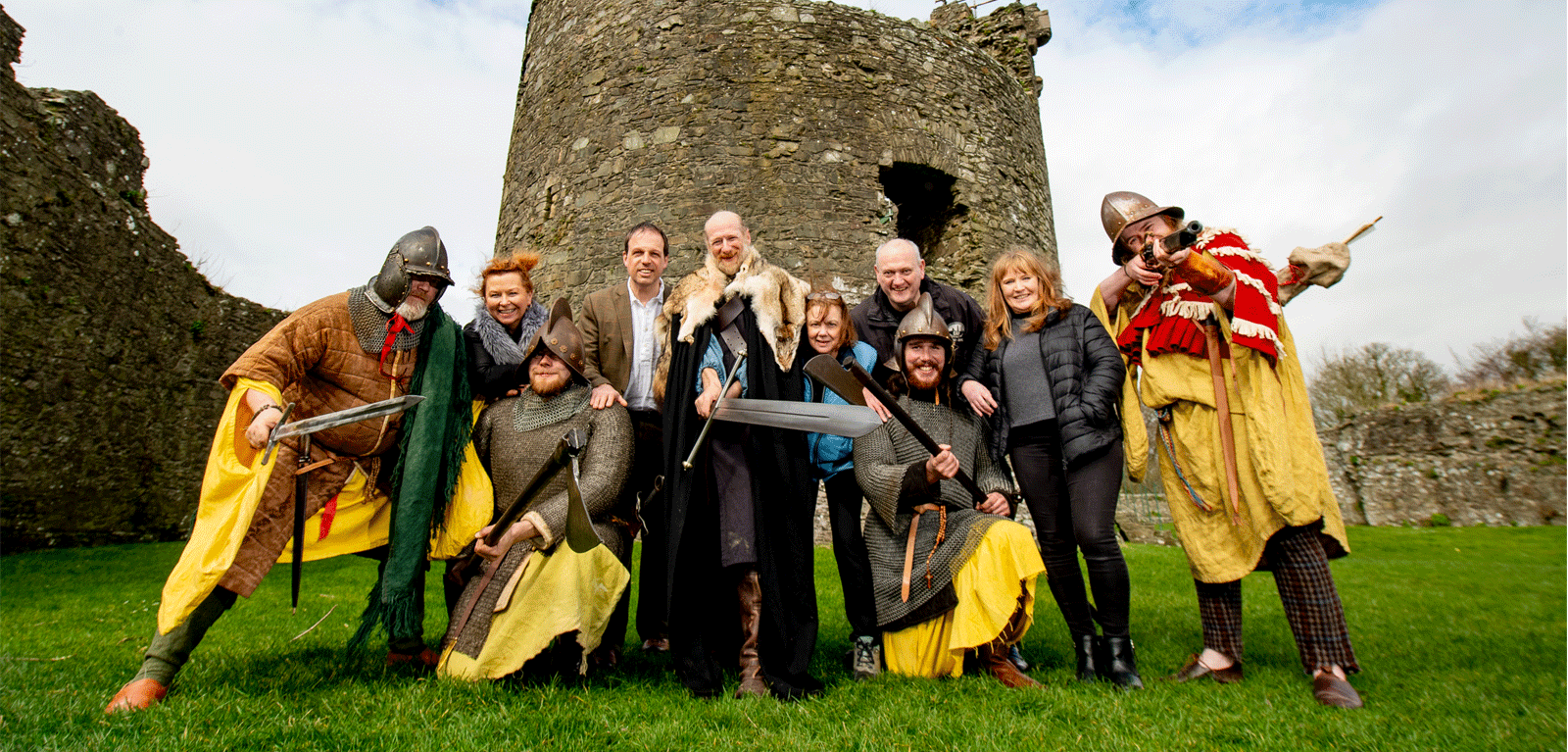“Journeying Beyond Westeros” project to blaze a new Medieval tourist trail across Northern Ireland
Archaeologists from Queen’s are playing a key role in a new project “Journeying Beyond Westeros”, which will introduce visitors to the largely hidden Medieval history of Ulster, through Northern Ireland’s connection to Game of Thrones.

Television audiences across the world have been thrilled by the exploits of the Starks, Lannisters, and Targaryens in HBO’s hugely successful Game of Thrones TV series – which is about to return for its final season – and ancient monuments across Northern Ireland have been used as filming locations for places in the seven kingdoms of Westeros, the main setting for the series.
These monuments, however, have their own remarkable stories to tell and the project will help to create a new Medieval heritage trail across Northern Ireland.
The project will be led by archaeologists from the School of Natural and Built Environment at Queen’s University Belfast, working with the Strangford Lough and Lecale Partnership, and is being supported and funded by The National Lottery Heritage Fund, Tourism NI, and the Historic Environment Division of the Department for Communities. It has been developed as part of their European Year of Cultural Heritage programme.
Dr Colm Donnelly from the School of Natural and Built Environment at Queen’s will lead the team. He said: “Using historic sources such as the Annals of the Four Masters, the object is to work towards the development of a heritage trail across Northern Ireland where visitors will learn the stories of our powerful past rulers and their families – their wars and rivalries, their alliances and marriages, and their betrayals and assassinations – in and around the year AD 1500.”
Professor Eileen Murphy, from the School of Natural and Built Environment at Queen’s, added: “The background research on the monuments across Northern Ireland and the people who built them will be undertaken at Queen’s. We will set out the matrix of lordships; place the monuments into that matrix; organise the lineages who ruled each lordship, including origins, notable leaders and notable events; and set out how this all played out on the monuments.
“Westeros has its Seven Kingdoms, but we have our Twelve Lordships, and we would hope to include local iconic sites in the trail such as Carrickfergus Castle, Tullaghoge Fort, Dundrum Castle, Bonamargy Friary, Dungannon Castle (Hill of the O’Neill) and Enniskillen Castle.”
Team member Caroline Nolan added: “Many of the incidents incorporated into Game of Thrones come from the Medieval world. We have our own events and tales that can be told about our Medieval lordships and this project will allow us to present them to the tourists who come to NI because of their Game of Thrones interest, and who evidently have a curiosity about Medieval intrigue and power struggles.”
Jim McGreevy, Member of NI Committee of The National Lottery Heritage Fund, commented: “The European Year of Cultural Heritage was an opportunity to showcase our unique cultural heritage, to fully realise its potential as a lever to attract investment, boost tourism and aid regeneration. We and the other funders were delighted to be working in partnership to invest in projects that help to unlock innovative ways to use our heritage.
“This project was one of nine that was funded across NI and we were excited to see how the global reach of Game of Thrones could be utilised to explore the real heritage and stories behind some of the iconic landscapes and sites featured in the show. We wish the team well as they embark on this fascinating new project.”
Iain Greenway, Director of Historic Environment Division in the Department for Communities, added: “Historic Environment Division is delighted to support this project. It provides an innovative way to bring people closer to the monuments included as part of the heritage trail through their connection to Game of Thrones. The experience will enable the hidden and authentic stories of many of our State Care monuments and the families connected to them, to be brought to life and shared with new audiences.
“These intriguing stories should be heard and valued, as they remind us of how our world is shaped by history and people, giving us a sense of our roots, our place in the world and the importance of our culture. We wish the team and the project every success and look forward to playing a part in helping visitors to treasure their past.”
In 2016 Game of Thrones tourism was estimated to be worth £30 million to our local economy, while Northern Ireland Screen estimates that £210 million has been spent on goods and services during its production since 2009, and it is hoped that the development of a heritage trail will become a legacy to Northern Ireland’s involvement with the TV series.
The project team also intend to engage with local people, tour operators and tour guides in the development of a network of Medieval cultural hubs and have chosen Downpatrick and the Lecale area in County Down as the starting point in this process.
This project will also integrate with the activities being undertaken by Historic Environment Division as they work to improve visitor access and community engagement at sites such as Portaferry Castle and Kirkistown Castle.
Media
Media inquiries to Jemma Greenlees at Queen’s University Communications Office T; +44 (0)28 9097 3087 E: j.greenlees@qub.ac.uk.